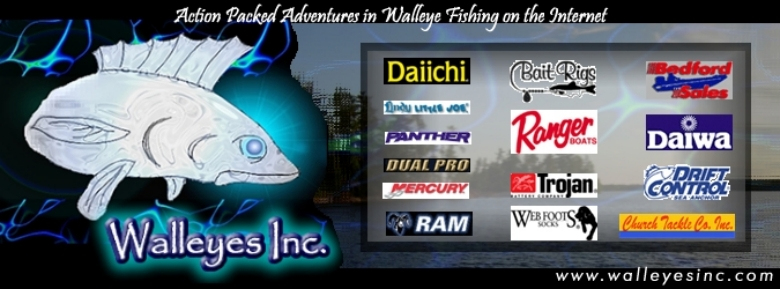A fish has two major components in its
environment. They are the water that the fish lives
in and the weather that is changing, not only seasonally but
day to day hour to hour and minute to minute. When either
the weather or water changes rapidly, a fish must have a period
of time to adjust to that change, and when it is adjusting
it is not in the mood to become active; its body doesnít allow
it. Thatís when some of the toughest fishing occurs.
Specific weather conditions tend to trigger a walleye feeding
frenzy. Basically it's a cold front, but there's more to it
than that. The ideal conditions for catching big walleyes
may come only a half-dozen
times in a season. To make the most of them a fisherman
must watch forecasts and the clouds and be prepared to fish
one step ahead of the storm. The main concern dealing with
the movement of fish is a cold front. The frequency
of a cold fronts vary in different parts of the country and
at different times of the year. Regardless of the weather
patterns in your
part of the country, the cold front will have a profound effect
on your fishing results.
A cold front is formed when a mass of cold dry air collides
with a mass of moist warm air, pushing the warm air mass along,
usually in an east to southeast direction. Cold fronts
are associated with rough, unstable weather, such as a thunderstorm,
squall lines, tornadoes, rain or snow. The approaching cold
front is not what bothers the fish. In fact, some fast
and furious action can be had under "pre-frontal" conditions.
Its what happens after the front passes through the area.
Usually, after a cold front we are greeted with a drop in
temperatures, a brisk wind from a westerly to northerly direction,
plus a bright, blue cloudless day. The one element that harms
the fish the most is light. Thatís why the passing of
a cold front is synonymous with poor fishing. We get
an intense light condition, a bright blue sky, that will drive
the fish to great depths. At these depths the fish will
become very dormant and
inactive. A fish has no eyelids to block out the light.
Rather than fight a bright light condition in shallow water,
it will drop to a lower level seeking a darker environment.
This is not to say you canít catch fish under bright conditions.
Deep water interpretation of structure and knowing where to
fish deep, plus know how to present lures at the proper depth
and speed can help offset these bad effects. Crankbaits are
a great way to find those walleyes in cold front conditions
because you can cover a lot of territory and concentrate on
walleyes that are active. You may catch more walleyes
on live bait rigs, but youíll catch a bigger average size
on crankbaits. In addition, crankbaits offer a rapid
way to eliminate unproductive water.
Plus, you can use the crankbait as a locator bait and then
finesse them with live bait.
Two basic types of crankbaits can be used for the majority
of your shallow-water walleye fishing. One is the long,
thin floater diver like the Original

.
These have a lazy, side to side action thatís attractive to
walleyes. The other type is the standard, bass style
crankbait. But when you choose this style, use the smaller
thin crankbaits in cold front conditions. The larger
models donít produce as well for walleyes. Select the
smallest models that have deep-diving lips. Lures like
a

Shad Rap is excellent for this type of fishing. In general,
use bright, visible colors like fluorescent orange or chartreuse
in darker water, and subtle colors like silver, blue or black
when the water is clear. Backtrolling is a method of slowly
maneuvering a boat with the outboard in reverse to achieve
precise line and bait placement along a specific depth contour.
This technique was designed to work with jig-and-live bait
combinations, jigging spoons and bladebaits to catch walleyes.
Backtrolling is still one of my favorite methods to catch
deep water cold front walleyes. Weather conditions often
determine walleye location, dictate presentation, and ultimately
measure success, yet weather is probably one of the least
understood element of the fishing equation

